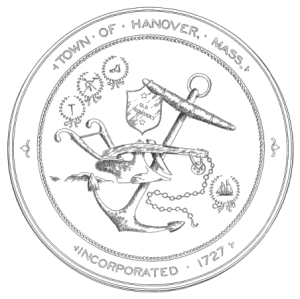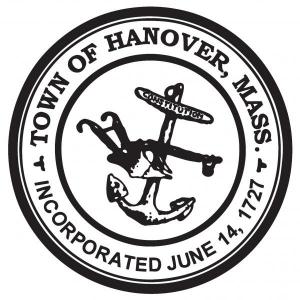Town Seal
James C. Waterman, at age 20, designed this Hanover Town Seal (left), which was simplified and is used today as the Official Seal of the Town (right). Waterman received a letter of appreciation and congratulations from the Board of Selectmen, which is now framed with the original seal and displayed at the Stetson House.


Hanover’s early economy was based on agriculture and lumbering. The lumber was used for house building and shipbuilding while other early industries included grist mills and iron forges. By the 18th century, the town had made itself a very self-sufficient community on a sturdy agricultural and industrial foundation, with a wealth of water power resources and a shipbuilding complex on the North River. Hanover was in fact one of the major industrial centers of southeastern Massachusetts at the time. Thirty ships were built in 1801 on the North River and the town's anchor forges made the anchors for the United States Navy and are said to have supplied the anchor for the U.S. Constitution.
The Hanover Town Seal proudly displays the early agricultural and ship-building history of the Town.
Unfortunately, a market for larger ships than the North River could hold ended the shipbuilding industry in Hanover. The town was the site of the invention of the first tack-making machine, and making tacks and fireworks were among the industries of the later 19th century for Hanover. These manufacturing jobs brought immigrants from Lithuania and Poland, who established their own settlements within the town. However, the most significant post-civil war movement was toward residential subdivision development as the main roads from Brockton and Boston were improved in the 20th century. Residents are proud of the Four Corners section of Hanover, which retains its authentic period village character.

